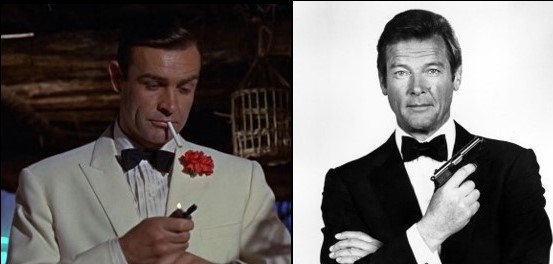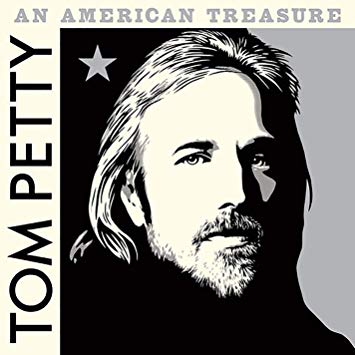Happy Sunday morning, afternoon, evening, night – whatever time it is in your neck of the woods. This is the day when I’d like to escape my current surroundings to embark on imaginary time travel to the beautiful world of music. As always, the trip includes six stops in different decades, and it starts right now. Hope you’ll join me!
Cannonball Adderley/Autumn Leaves
Having recently passed the autumn equinox, it feels right to start our journey with Autumn Leaves, a beautiful track that appeared in August 1958 on Somethin’ Else, a studio album by Julian Edwin “Cannonball” Adderley. The alto saxophonist was in fine company, including Miles Davis (trumpet), Hank Jones (piano), Sam Jones (bass) and Art Blakey (drums). At the time, Adderley also was a member of Davis’ band. The recording of Somethin’ Else occurred just after Davis had recorded his landmark album Milestones, which became known for introducing modalism in jazz and defined Davis’ music in the years to follow. Autumn Leaves is based on a popular 1945 French song, Les Feuilles Mortes (the dead leaves), by Hungarian-French composer Joseph Kosma, with original lyrics written by French poet Jacques Prévert. English lyrics were penned by Johnny Mercer. The song became a jazz standard and was recorded by many artists throughout the ’50s and ’60s, both in vocal and instrumental versions.
Son Volt/Flow
Having featured Wilco in my latest new music post, perhaps it’s not a huge surprise Son Volt were on my mind. Both groups emerged in 1994 from the ashes of alt. country band Uncle Tupelo. Flow is a song that takes us to October 1998 and Son Volt’s third studio album Wide Swing Tremolo. Like all other tracks, it was written by the band’s founder Jay Farrar, who had formed Uncle Tupelo with Jeff Tweedy and Mike Heidorn in 1987. I have a lot time for Farrar who writes great songs that oftentimes remind me of Neil Young.
The Liverpool Scene/Percy Parslow’s Hamster Farm
Let’s next head to 1968 and UK poetry band The Liverpool Scene. Sadly, I don’t remember how I came across this out-of-left-field pick but would guess my longtime German music buddy had mentioned them to me. According to Wikipedia, the group grew out of the success of a 1967 album titled The Incredible New Liverpool Scene, which featured two members of what became The Liverpool Scene, poet and painter Adrian Henri and guitarist Andy Roberts. Percy Parslow’s Hamster Farm appeared on The Liverpool Scene’s 1968 album Amazing Adventures of. While the band gained popularity on the UK university and college circuit and even opened for Led Zeppelin in 1969, they never achieved any commercial success and broke up in 1970.
Billy Idol/White Wedding
Unlike The Liverpool Scene, I trust this next artist needs no introduction. AllMusic perfectly puts it: Along with Duran Duran, Billy Idol was one of the first young pop/rock artists to achieve massive success in the early ’80s due to the advent of MTV. Mixing his bad-boy good looks with an appealing blend of pop hooks, punk attitude, and dance beats, Idol quickly rocketed to stardom before hard living briefly derailed his career. White Wedding takes us to July 1982 and Idol’s eponymous debut album. When initially released as a single in October that year, it missed the UK charts, though it made the top 40 in the U.S., reaching no. 36 on the Billboard Hot 100. It was more successful in New Zealand and Australia where it climbed to no. 5 and no. 9, respectively. But Idol got chart recognition in the UK as well in 1985, when the song was re-released as a single and soared to no. 6. I’ve always loved it and still do!
Mavis Staples/Down in Mississippi
While I’m still puzzled how The Liverpool Scene got on my radar screen, there’s no doubt my German music friend is responsible for our next stop in April 2007. That’s when the amazing Mavis Staples came out with her seventh studio album We’ll Never Turn Back. The gospel and soul singer and civil rights activist gained initial fame as a member of her family’s band The Staple Singers who started performing in Chicago area churches in 1948 and made their first professional recordings in the early 1950s. Staples, who is now 84 and the last surviving member of the group, released her eponymous solo debut album in 1969. At the same time, she continued to perform with her father and her siblings. We’ll Never Turn Back, which was produced by Ry Cooder who also contributed guitar and mandolin, is a concept album revolving around themes of the 1950s and 1960s Civil Rights Movement. Let’s listen to Down In Mississippi written by blues guitarist J. B. Lenoir who was active in the Chicago blues scene in the 1950s and 1960s.
Outlaws/Gunsmoke
And once again, it’s time to wrap up another Sunday musical journey. Let’s make it count with great music by southern rock band Outlaws. Formed in Tampa, Fla. in 1967, they are best known for There Goes Another Love Song and Green Grass and High Tides, both off their eponymous 1975 debut album, as well as their 1980 cover of (Ghost) Riders in the Sky. But there’s more to Outlaws, as illustrated by Gunsmoke, a great song from their third studio album Hurry Sundown, which appeared in 1977. It was co-written by the band’s Henry Paul (guitar, vocals) and Monte Yoho (drums). While they’ve had periods of inactivity along the way, Outlaws are still around, with Paul remaining as the sole original member.
Last but not least, here’s a Spotify playlist of the above goodies. Hope there’s something for you there and that you’ll be back for more music time travel next Sunday.
Sources: Wikipedia; AllMusic; YouTube; Spotify








